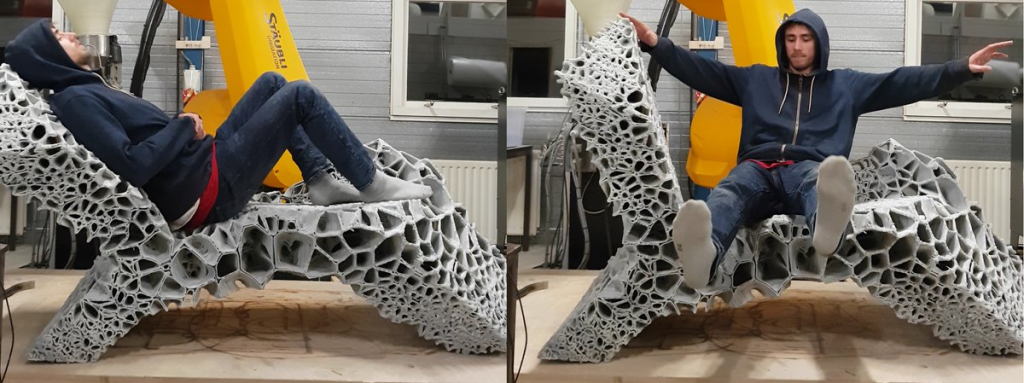We’re seeing an increased focus by software firms in our teeny tiny industry. Simulation, PLM, CAD, the Digital Twin, Industry 4.0 have some very large and influential firms salivating about that peanut butter and jelly sandwich that is the combination of the digital and manufacturing. If we are to grow digital manufacturing and 3D printing then our soft and hard assets will have to be managed and controlled through software. The more conventionally manufactured parts we replace with 3D printing the more files, settings, and process information will have to be monitored and accessed through software packages. This in part explains Dan Wellers’ interest in 3D printing and enthusiasm around the technology. He leads Digital Futures at SAP Global Marketing where in effect he has to be SAP’s Nostradamus and predict the impacts of technologies such as ours.
![]()
What is 4D printing?
Building upon existing 3D printing technology, 4D printing uses dynamic materials that perform differently when they encounter changing conditions such as water, light, heat, or electrical current. These materials—hydrogels, shape memory polymers, carbon fiber, custom textile composites, and more – have properties that enable objects to self-assemble, reshape themselves, or otherwise react to changing events or conditions. It’s called 4D printing because it incorporates what’s often referred to as the fourth dimension: time.
Why is it important?
4D printing can expand what is currently achievable in prototyping, design, manufacturing, and post-production adaptability and usage. Examples include: self-flattening boxes to be used in warehouses and logistics companies; plumbing system pipes capable of changing their diameter in response to flow rate or water demand. 4D printing has opened up entirely new innovations, such as medical implants made of dynamic biomaterials, which are already saving lives.
Because of its self-assembling capability, objects too big to be printed via conventional 3D printers can be compressed for printing and then expand after manufacturing. 4D printing could also be used to eliminate the mundane problem of furniture assembly. In addition, researchers have demonstrated how smart materials used in 4D printing can enable an object to “remember” its shape. That capability could be used to flat-pack a self-assembling shelter that springs into place after a natural disaster, or develop bridges and temporary roads made from materials that expand to heal damage and cracks.
![]()
How important will 3D printing be?
3D printing represents the digital transformation of both design and production in the manufacturing industry and will have a profound impact on everything from logistics to extended supply chains to trucking. 3D printing eliminates many of the design and production constraints inherent in traditional manufacturing. Product design can now be optimized for customer need and function, instead of production efficiencies.
Over the last few years, 3D printing has advanced in the way it employs different materials—not only plastic, but also metal, resins, sandstone, wax, and ceramics—increasingly incorporating multiple materials at once. These improvements are paving the way for significant benefits, including cost reductions, streamlined supply chains, faster time to market, increased personalization, optimized resource usage, improved prototyping, and the manufacture of new designs not possible in the past.
Commercial applications continually emerge to power 3D printing of everything from everyday household products to customized medical devices and prosthetics to nearly all the components of a house. 3D printing will expand into 4D printing in the coming years by adding a fourth dimension: time. By using specially engineered materials that perform differently when they encounter changing conditions, 4D printing promises to further shift the shape of manufacturing.
![]()
How will people and machines work together in the future?
Artificial intelligence is getting better at solving increasingly complex problems. If we want to retain humanity’s value in an increasingly automated world, we need to start recognizing and nurturing skills that are uniquely human.
To learn more, read “The Human Factor In An AI Future” and “Human Skills for the Digital Future”.



